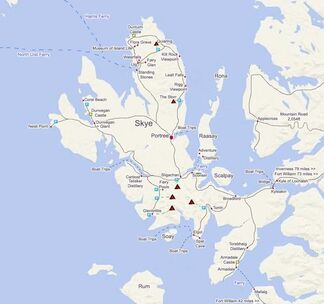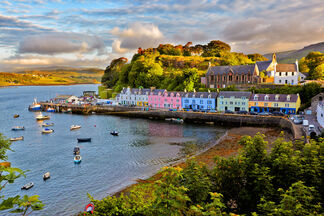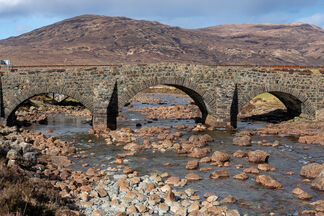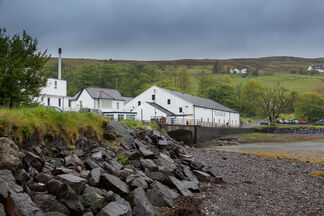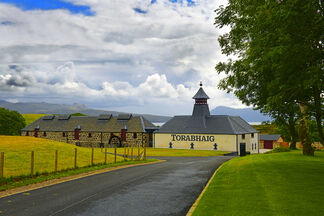The Islands Whisky Region: Part 3
The Isle of Skye
The Islands Whisky producing region is scattered around the coast of mainland Scotland. In the last couple of Blog entries, I wrote about Orkney and Jura – two great whisky producing Islands. This time, I am writing about Skye. Home to three wonderful distilleries and Whiskies, of which Talisker is the best known.
As you know by now, I subscribe to the six region categorisation of Scottish Whisky; Highlands, Lowlands, Speyside, Campbeltown, Islay and Islands. With over 800 islands around the mainland of Scotland they would all have had distilleries at some time or other. Mosly illicit!
The Isle of Skye
A Bit of History
The name of the island, Skye, is thought to be a translation of the word ‘ski’ from Norse, which means ‘cloud’. The Isle of Skye is home to just less than 10,000 people. But Skye now attracts an outsized 650,000 visitors annually!
It’s been a settlement since the very start of human civilization. The capital is Portree, with a population of 2000, smaller than most villages near me! The Isle of Skye is where author Ian Fleming created the character of James Bond. It’s also where some of the movie Skyfall, the 23rd Bond movie, was filmed. Skye has played host to all kinds of movie magic - from Stardust to The BFG, Snow White and The Huntsman - and even one of the Transformers movies.
Dinosaurs roamed the island some 165 million years ago, and the beaches at Staffin are prime spots for you to see foot prints in the rocks to prove they were there.
One of the most romantic characters in Scottish history, Flora MacDonald is famous for helping Bonnie Prince Charlie escape from Scotland after the defeat of the Jacobites at the Battle of Culloden in 1746. The part that Flora played in the escape of Bonnie Prince Charlie ‘over the sea to Skye’ is immortalised in the ‘Skye Boat Song’, published in 1884. After his defeat at the battle of Culloden Moor in 1746, Bonnie Prince Charlie was forced to flee for his life. After two months on the run he arrived at the island of South Uist where he met 24-year-old Flora. She agreed to help the Prince escape. The Prince was disguised as Betty Burke, an Irish spinning maid. They set sail in a small boat from Benbecula on 27th June 1746, and went to Skye. After hiding overnight in a cottage, they made their way overland to Portree where the Prince was able to get a boat to the island of Raasay and from there, passage to France. There is a monument on Skye to Flora MacDonald.
The Legends of Skye
Fairies, Warrior Queens, and Eternal Beauty
There’s a legend which states that if you put your face in some of the water running through Skye, you’ll receive the gift of eternal beauty. Specifically, it has to be the water running through the Old Sligachan Bridge. Personally, I think the Whisky will give you eternal beauty and not putting your face in water!
The isle is home to the famous Faerie Glen, which legend states is where, as you can imagine, you are supposedly able to spot fairies. The exact location of the glen, apparently, is a well-guarded secret – so if you go on a tour there, you won’t be given the directions on route! Sounds a bit like a Scottish tourist trap to me. A bit like the Loch Ness Monster?
They even say there’s an ùruisg at Loch Coruisk. An ùruisg is half-man, half-goat that brings bad luck if you see it! So I suggest you don’t go looking for it.
Lastly, a female warrior and witch called Scáthach chose Skye to found her impenetrable college of martial combat. Promising warriors would come from far and wide to train in warfare and sorcery here, and to learn in secret from perhaps the greatest warrior the Celtic realms have ever known. At least, that’s how her legend goes. But what ultimately happened to the powerful warrior queen Scáthach remains a mystery; the lack of any known tomb only adds to her mystique. Legend has it that she’ll return when the world needs her most. I can’t help but think, that a homecoming is somewhat overdue!
Anyway, we should look at the 3 Whisky distilleries of Skye:
Talisker Distillery
One Of The Most Famous Single Malts
Founded on Skye by Hugh and Kenneth MacAskill in 1830, Talisker is the largest producer of whisky on The Islands with a capacity of over 3m litres. One of the favourite whiskies of Robert Louis Stevenson, who called it the ‘king o’ drinks’, Talisker has won several awards including Best Islands Single Malt at the 2013 World Whiskies Awards.
Although the distillery was established in 1830, most of the present production buildings were erected following a serious fire in November 1960. The replacement stillhouse was equipped with five stills that were exact replicas of the originals, and these stills give an insight into the character of the single malt once referred to as “the lava of the Cuillins.”
Talisker drinkers will tend to remark on how they can smell and taste a ‘made by the sea’ character with every sip. An almost salty edge which sounds odd but is really pleasant! This comes from the Angels Share. As the alcohol leaves the casks during the maturation stage, the space in the cask is replaced by the local air. And as Talisker stores it’s casks right next to the sea, the sea air enters the cask and adds flavour.
Torabhaig Distillery
A Second Distillery on Skye
For almost two centuries, Talisker could claim to be the only legal distillery on Skye. Finally, in 2017 it was joined by Torabhaig, Gaelic for “the hill above the bay.” Torabhaig is located in a converted and expanded historical farmstead on the Sleat (pronounced “slate”) Peninsula, in the southwest of the island. Sir Iain Noble, one-time merchant banker, Skye landowner, and passionate advocate of the Gaelic language, identified the dilapidated farm dating from the 1820s as the ideal site for his proposed “Gaelic-speaking” distillery; sadly he died in 2010, before the project could come to fruition.
Single Malt Scotch Whisky is inextricably linked to its place of origin, perhaps more so than any other product. The water, the land, the climate, all play a role in the character of the whisky. All these factors are also vitally important in planning a new distillery. Simply put, you cannot just build a distillery anywhere.
The 19th century building has now been fully restored to hold the gorgeous copper stills and traditional wooden washbacks that should allow production of whisky for the next two hundred years. After a painstaking 4-year restoration and build, Torabhaig has been a fully operational Single Malt Scotch Whisky distillery since January 2017. The Whisky is more peaty than Talisker. Beginning in July 2020, the first selection of 100 casks were made for an initial bottling, which hit shelves in February 2021. Peating levels have subsequently been increased from 55-60 phenol parts per million (ppm) to 70-80 ppm, and spirit is being filled into a wider range of cask types. This is a whisky to watch for peat lovers!
Unlike many scotch distilleries that tend to champion a single veteran master distiller, Torabhaig relies on nine distillers. All are young and eager locals, who are being trained and supported in furthering their formal education through programs like the Institute of Brewing & Distilling’s Diploma in Distilling.
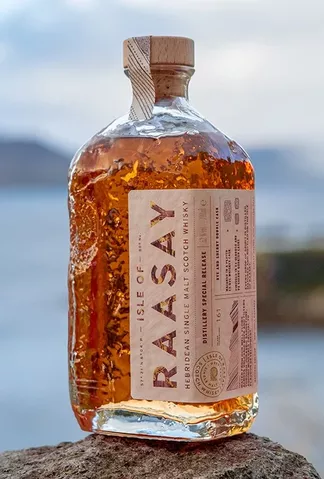
Isle of Raasay
The Third Distillery on Skye
Just a 25-minute car ferry from Sconser on Skye takes you to the neighbouring small island of Raasay, where illicit distilling took place until around 1850. Today it is home to legal whisky making at Isle of Raasay Distillery. Owned by Edinburgh-based R&B Distillers, Isle of Raasay Distillery is run by Alisdair Day and Bill Dobbie. They filled their first cask on September 14, 2017 and went into full production five days a week on September 27 of that year.
They make both an unpeated spirit and a spirit from malt peated to 40 to 55 ppm. They are aiming for a spirit that’s not too heavy, with dark fruity notes.
Raasay is using three different cask types: Woodford Reserve rye barrels, virgin American oak barrels with a high level of charring, and Bordeaux red wine casks. Its first single malt release was in April 2021. With 3 Cask types and their peated and un-peated spirit, they have 6 possible combinations with which they plan to experiment a little.
The distillery provides a valuable opportunity for local employment. More than 20 of the island’s 160 inhabitants are employed there.
